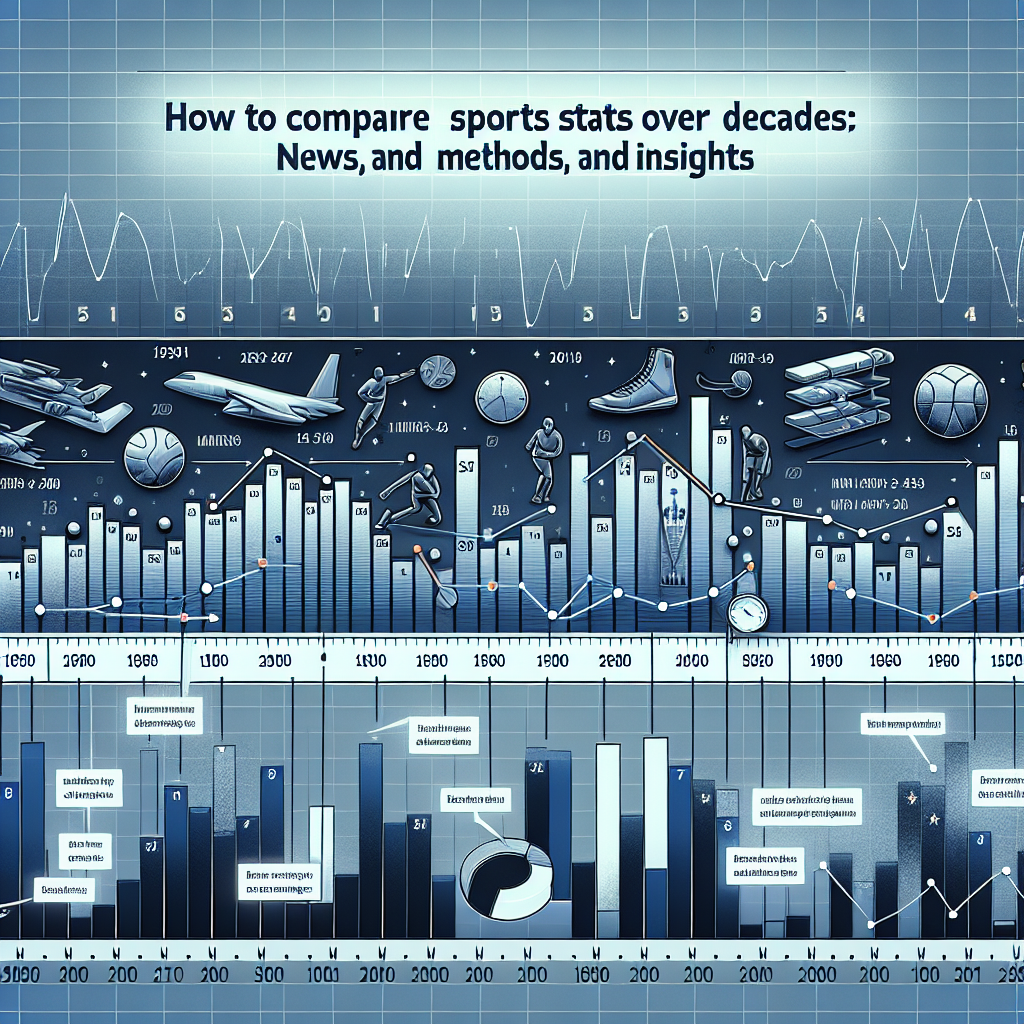How to Compare Sports Stats Over Decades: News, Methods, and Insights
Sports statistics have always played a crucial role in understanding the evolution of athletic performance, team strategies, and even fan engagement. But how can we accurately compare sports stats over decades, given the changes in rules, training, equipment, and style of play? In this comprehensive guide, we will dive deep into the methods, challenges, and newsworthy innovations involved in comparing statistics across different eras, providing you with practical insights and professional tips for making meaningful comparisons.
Why Comparing Sports Stats Over Decades Matters
- Historical Perspective: Understanding the progress and key turning points in sports history.
- Player Legacy: Ranking athletes from different generations fairly.
- Performance Trends: Identifying how training, nutrition, and technology have influenced sports statistics news over time.
- Fan Engagement: Fueling debates and discussions among sports enthusiasts and analysts.
Challenges in Comparing Sports Stats Across Decades
Comparing sports statistics from different eras is not as straightforward as it may seem. Here are some primary factors that complicate direct comparisons:
- Rule Changes: Rule modifications often reshape the nature of sports. For example, the introduction of the three-point line in basketball or changes in offside rules in soccer drastically affect player stats.
- Season Length: The number of games played per season has varied, impacting cumulative statistics such as points, goals, or home runs.
- Training and Equipment Advances: Modern athletes benefit from cutting-edge training techniques, nutrition, and gear, which can inflate or deflate stats compared to earlier decades.
- Opponent Quality: League expansions and integration have shifted the competitive landscape, influencing the difficulty of achieving certain statistical milestones.
- Data Collection Methods: Earlier decades lacked advanced data tracking, leading to incomplete or inconsistent records.
Popular Methods for Comparing Sports Stats Across Eras
To ensure a fair analysis, experts use several approaches to normalize and interpret statistics across decades:
- Era-Adjusted Stats: Normalizing statistics based on league averages for a given era. For instance, baseball analysts use ERA+ or OPS+ to compare pitchers and hitters while accounting for the league’s offensive environment.
- Per-Game or Per-Minute Rates: Instead of total stats, using averages (e.g., points per game, goals per 90 minutes) accounts for changes in season length and playing time.
- Percentile Rankings: Comparing how a player performed relative to peers in their era rather than using raw numbers.
- Advanced Analytics: Metrics like Player Efficiency Rating (PER), Win Shares, or Expected Goals (xG) incorporate context and offer cross-era comparisons.
- Historical News Analysis: Reviewing sports news archives to understand context, rule changes, and public perception during different periods.
Case Study: Comparing NBA Players’ Points Per Game Over Decades
Let’s illustrate with a practical example. Suppose you want to compare the points per game (PPG) of NBA legends from the 1970s and the 2020s. Here’s how to approach it:
- Adjust for Pace: The number of possessions per game has changed. Use pace-adjusted PPG to level the playing field.
- Contextualize Rule Changes: The three-point line, introduced in 1979, revolutionized scoring. Consider the impact of this rule on scoring stats.
- Compare to Era Averages: Determine how each player’s PPG compares to the league average in their era.
Example: If Player A averaged 30 PPG in a league where the average was 20, and Player B averaged 28 PPG in a league where the average was 18, Player A’s dominance is relatively higher.
The Role of News Coverage in Sports Stats Comparison
Sports news outlets often shape public perception through their reporting on records, milestones, and era comparisons. Journalists and analysts use data-driven storytelling to contextualize achievements, highlight underappreciated records, and spark debates about the greatest players and teams across decades. News archives also provide valuable background on rule changes and societal shifts that influence athletic performance and statistical outcomes.
Latest Innovations: Technology and Big Data
Modern technology has revolutionized the way we collect, analyze, and compare sports statistics. Here are some recent developments making headlines in sports analytics news:
- Wearable Devices: Track in-game movement, heart rate, and fatigue for deeper performance insights.
- Machine Learning: Algorithms predict player development, injury risk, and performance trends based on historical data.
- Augmented Reality (AR) and Visualization: Interactive dashboards make it easier for fans and analysts to visualize cross-era stat comparisons.
- Automated Data Parsing: Parsing vast databases enables the extraction of LSI-keywords and contextual information for accurate sports news reporting.
Tips for Fans and Analysts: Making Your Own Decade Comparisons
- Use Multiple Metrics: Combine traditional (e.g., goals, points) and advanced stats (e.g., PER, xG) for a holistic view.
- Understand the Context: Always research rule changes, league expansions, and cultural shifts before drawing conclusions.
- Leverage News Archives: Historical news articles provide invaluable context for interpreting stats.
- Engage in Community Analysis: Participate in online forums to share findings and debate interpretations—crowdsourcing often uncovers overlooked insights.
Conclusion: The Art and Science of Comparing Sports Stats Over Decades
Comparing sports stats over decades is both an art and a science, requiring a balanced approach that blends data analysis with historical context. Whether you’re a fan, journalist, or statistician, understanding the nuances of cross-era comparisons enhances your appreciation for the athletes and their achievements. Stay updated with the latest news in sports analytics, and don’t hesitate to dive into the numbers—there’s always more to discover in the evolving world of sports statistics!
